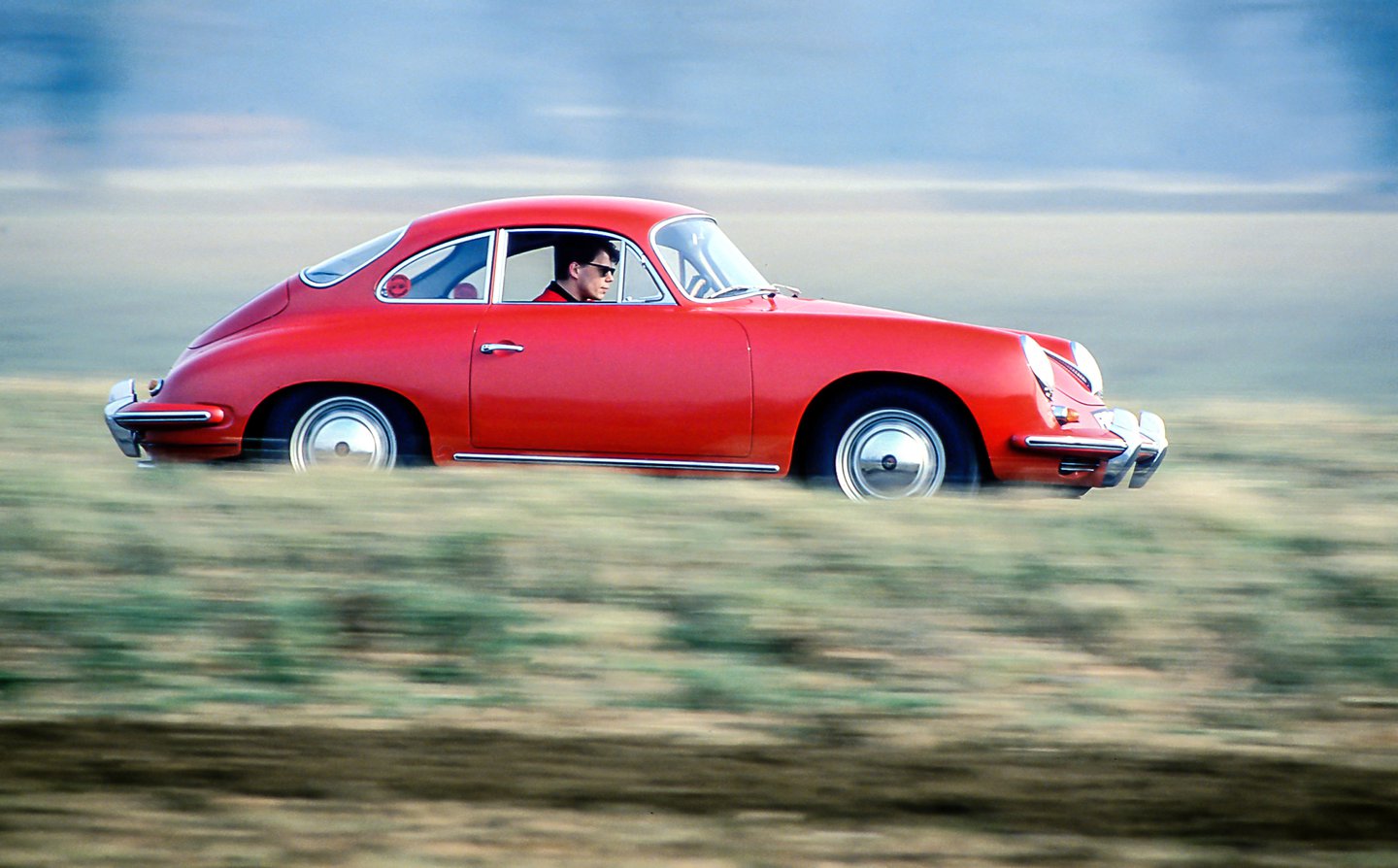

→
Scroll to discover more
The glory and the shadows
The story of Porsche
It’s easy to think that the two most charismatic car companies (or, as they grandly prefer, ‘marques’) in the world are fundamentally similar. Great edifices constructed by the vision and determination of an inspired founder.
It certainly was true of Ferrari, but Porsche is not one man, it’s a dynasty. The great founder, Ferdinand, passed it on to his son, also called Ferdinand, who passed it onto his four sons, one of whom was called, inevitably, Ferdinand. This family does not like surprises.
And it’s important to know which Ferdinand is which. Here’s what matters: the cars we think of when we hear the name Porsche were all built in the reign of Ferdinand the Second, known in the family as Ferry. The 911s, Targas, Boxters and Carreras are all Ferry cars. All post-1945.
It certainly was true of Ferrari, but Porsche is not one man, it’s a dynasty. The great founder, Ferdinand, passed it on to his son, also called Ferdinand, who passed it onto his four sons, one of whom was called, inevitably, Ferdinand. This family does not like surprises.
And it’s important to know which Ferdinand is which. Here’s what matters: the cars we think of when we hear the name Porsche were all built in the reign of Ferdinand the Second, known in the family as Ferry. The 911s, Targas, Boxters and Carreras are all Ferry cars. All post-1945.
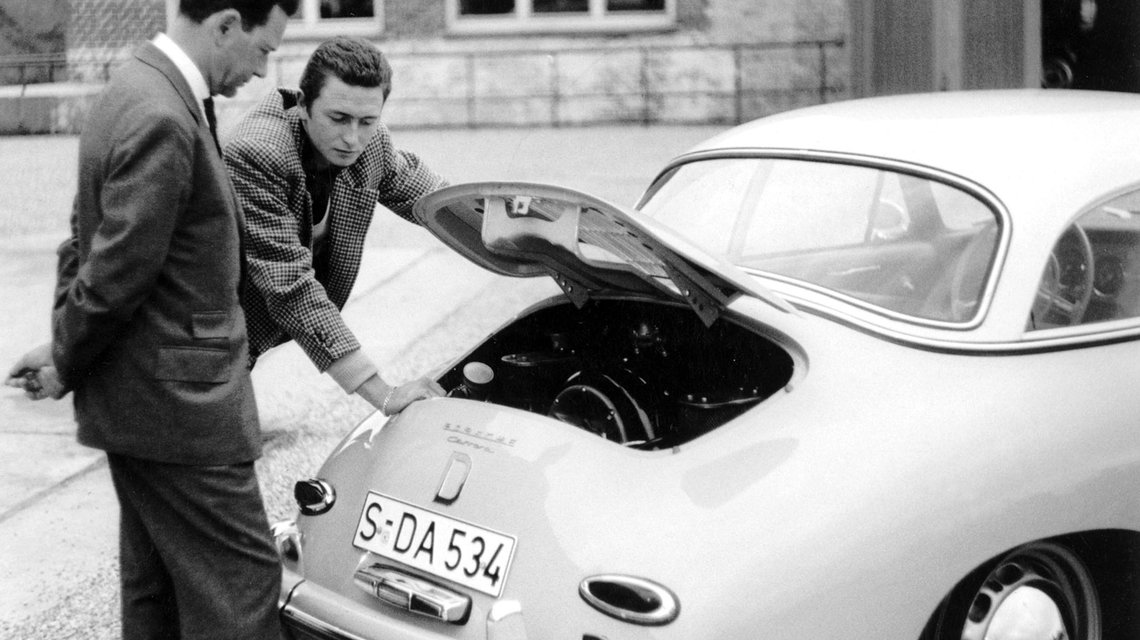
Ferry and Ferdinand
He took over the company from his father, the great and legendary Dr Porsche. All his life, in spite of everything he achieved (and that includes nineteen victories at le Mans, more than any other maker) Ferry would insist that he wasn’t ten percent of the engineer that his father was. That’s less surprising than it might seem: in 1999 motoring journalists voted Ferdinand Porsche “Car Engineer of the Century”. Their justifications ran right back to 1900, when Porsche had opened the century by showing, in Paris, an electric car. That’s not an autocorrect glitch – it was an electric car, in 1900. He then developed a hybrid, the world’s first, of course, using a Daimler engine. He won a major rally in 1901, driving his own “Lohner-Porsche Mixte Hybrid”
For the next four decades Dr Porsche swept from one success to another as fast and as effortlessly as the cars he was building. He was head of design at Daimler. Then at Mercedes-Benz, where he tried to interest them in a small, light, fast car to complement their range of big, dark, limousines. When they showed no enthusiasm he struck out on his own and in 1931 the seed of the company that we know today was planted.
Porsche valued precision more than brevity, so the name he gave his company was: Dr. Ing. h.c. F. Porsche GmbH, Konstruktionen und Beratungen für Motoren und Fahrzeugbau.
It stayed that way until 1950, when his son Ferry, who was about to take over, shortened it to the family name: Porsche. Thus it was. Thus it is. Thus it always will be.
Father and son could not have been more different. The old man driven, determined, dogmatic and dynastic: an echo of the nineteenth century. People who worked for him knew that ‘Excellence is expected’ was, if anything, an understatement. The son, by contrast, quiet, unassuming, self-effacing, pragmatic and brilliant. Usually, in fact always, seen in a comfortable tweed jacket, he looked more like a solicitor from a prosperous county town than the head of one of the most thrilling car companies on earth.
For the next four decades Dr Porsche swept from one success to another as fast and as effortlessly as the cars he was building. He was head of design at Daimler. Then at Mercedes-Benz, where he tried to interest them in a small, light, fast car to complement their range of big, dark, limousines. When they showed no enthusiasm he struck out on his own and in 1931 the seed of the company that we know today was planted.
Porsche valued precision more than brevity, so the name he gave his company was: Dr. Ing. h.c. F. Porsche GmbH, Konstruktionen und Beratungen für Motoren und Fahrzeugbau.
It stayed that way until 1950, when his son Ferry, who was about to take over, shortened it to the family name: Porsche. Thus it was. Thus it is. Thus it always will be.
Father and son could not have been more different. The old man driven, determined, dogmatic and dynastic: an echo of the nineteenth century. People who worked for him knew that ‘Excellence is expected’ was, if anything, an understatement. The son, by contrast, quiet, unassuming, self-effacing, pragmatic and brilliant. Usually, in fact always, seen in a comfortable tweed jacket, he looked more like a solicitor from a prosperous county town than the head of one of the most thrilling car companies on earth.
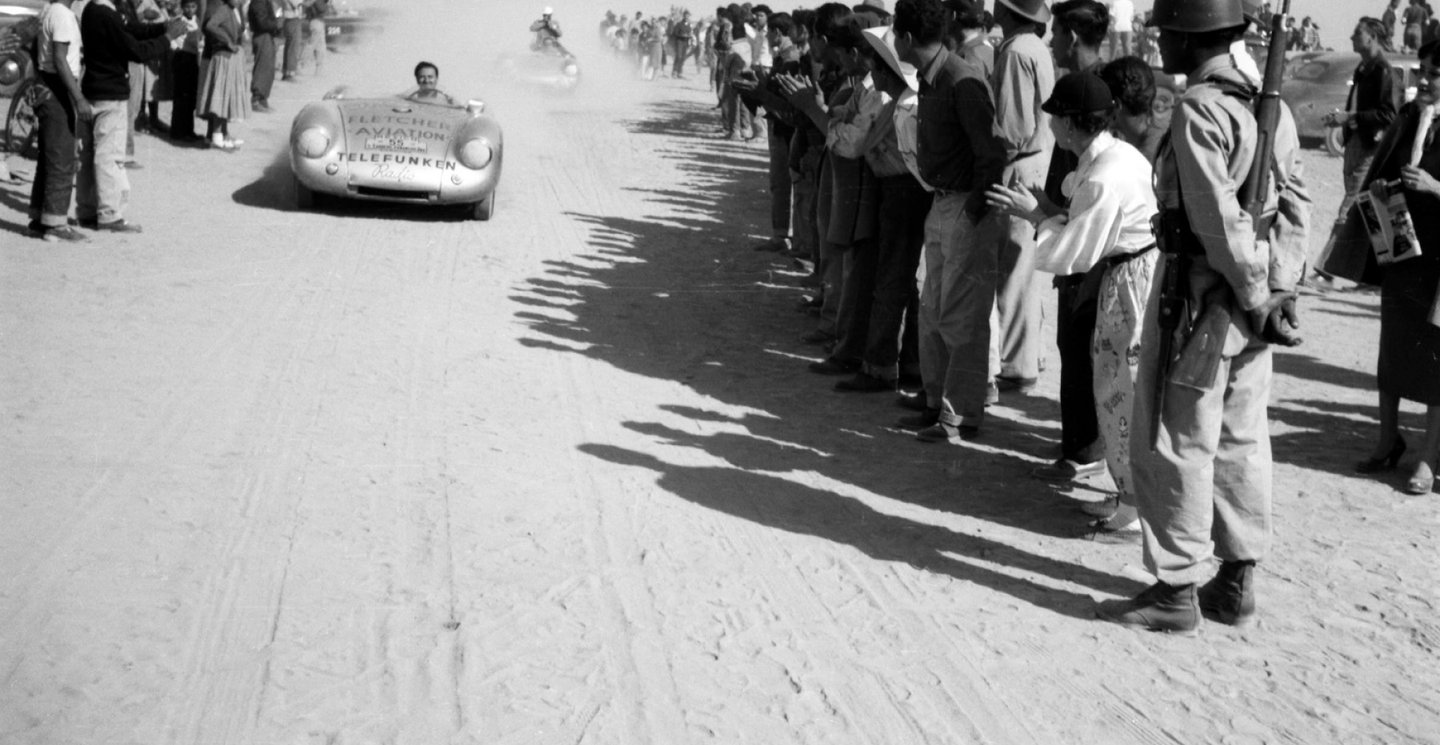
But the appearance was deceptive. Ferry was never afraid to take bold decisions, to assume massive risks. He designed and built the world’s most successful sports car, the 911, which was first rolled out in 1964 and is still in production today. As a manager, he didn’t hesitate to fire senior family members, even his own son, when they put themselves before the company. But perhaps his boldest move was his first: he decided that what the world needed was a fast, glamourous two-seater that would cost a fortune to run and was breathtakingly expensive to buy. It looks indulgent today – in 1945 it must have been laugh-out-loud ludicrous.
For the most important decision of his life Ferry broke the habit of a lifetime and bypassed the hard facts to make his decision on instinct. The facts were certainly not on his side. The German economy was not just in ruins, it didn’t exist at all. And the institutions that would be needed to rebuild it would have to be rebuilt first themselves. But Porsche felt that the time had come for something different. There was a new generation out there. A generation raised in war who weren’t going to go back to the old ways, which were perfectly symbolised by limousines and chauffeurs. They wanted to be in control themselves. They wanted to be fast and free and flexible. They wanted to get away from the past just as fast as they could.
What this generation was craving, though they didn’t know it yet, was a sports car.
Porsche was not the first to build a high-performance car, but he was the first to build one that actually worked. The Ferraris and Bentleys were glorious, but they were also gloriously unreliable. They were designed for the track, where a feeding frenzy of mechanics would descend like gulls when the temperamental vehicles limped into the pits. Porsche thought that was wasted time. And he didn’t see why a car that ran well on the track couldn’t perform equally well in the town, which is a much less demanding environment.
For the most important decision of his life Ferry broke the habit of a lifetime and bypassed the hard facts to make his decision on instinct. The facts were certainly not on his side. The German economy was not just in ruins, it didn’t exist at all. And the institutions that would be needed to rebuild it would have to be rebuilt first themselves. But Porsche felt that the time had come for something different. There was a new generation out there. A generation raised in war who weren’t going to go back to the old ways, which were perfectly symbolised by limousines and chauffeurs. They wanted to be in control themselves. They wanted to be fast and free and flexible. They wanted to get away from the past just as fast as they could.
What this generation was craving, though they didn’t know it yet, was a sports car.
Porsche was not the first to build a high-performance car, but he was the first to build one that actually worked. The Ferraris and Bentleys were glorious, but they were also gloriously unreliable. They were designed for the track, where a feeding frenzy of mechanics would descend like gulls when the temperamental vehicles limped into the pits. Porsche thought that was wasted time. And he didn’t see why a car that ran well on the track couldn’t perform equally well in the town, which is a much less demanding environment.
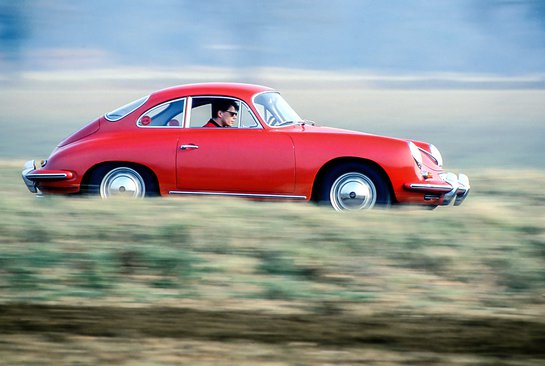
And so the 356 was born. Well, born is a romantic word for it, these were make-do times. The early models were assembled in an old sawmill in Austria, rented for the purpose. The car was described as ‘an upside down bathtub with a VW engine’, which is pretty much what it was. But this small, strange-looking machine (’cockroach’ was the most frequent simile) had the perfect equation of weight to power and was very, very fast. The shape was no accident, Porsche had been studying aerodynamics and airflow, and with the radical step of putting the engine in the back he pressed the wheels onto the surface of the road, generating huge traction and grip. (The consequence of this was that the front wheels were practically off the ground, which means steering can be exciting, especially at speed. But that was, and still is, the thrill of driving a Porsche. This takes nerve and judgement and it helps if you’re not bothered about living to a ripe old age.)
Throughout his long career, Ferry Porsche constantly did things that make you wonder “why doesn’t everyone do that?”. The most famous sports car in the world is the Porsche 911, which he designed and launched in 1963 and which is still in production today. That is to say, there is a car in production today that’s called the 911. Obviously, it doesn’t have much in common with the car made in ’65. Any other maker would have launched a series of new models, making as much as they could of the differences. And all these cars would have slipped quietly into oblivion. Not so Porsche. He modified and improved and refined the 911 over the years, but it was always, is always, the 911. And so today it occupies an unassailable place in the story of motoring: this is half a century of history you can buy and drive.
Throughout his long career, Ferry Porsche constantly did things that make you wonder “why doesn’t everyone do that?”. The most famous sports car in the world is the Porsche 911, which he designed and launched in 1963 and which is still in production today. That is to say, there is a car in production today that’s called the 911. Obviously, it doesn’t have much in common with the car made in ’65. Any other maker would have launched a series of new models, making as much as they could of the differences. And all these cars would have slipped quietly into oblivion. Not so Porsche. He modified and improved and refined the 911 over the years, but it was always, is always, the 911. And so today it occupies an unassailable place in the story of motoring: this is half a century of history you can buy and drive.
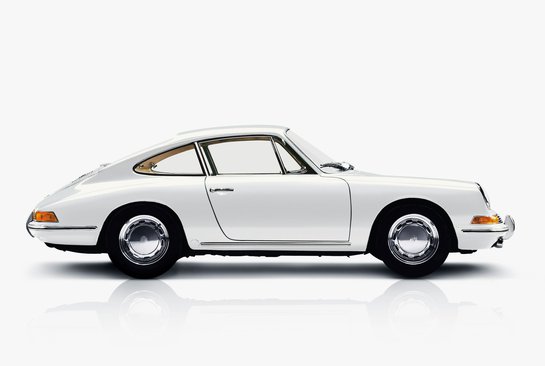
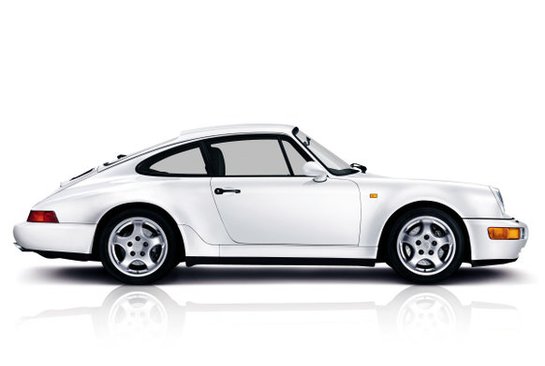
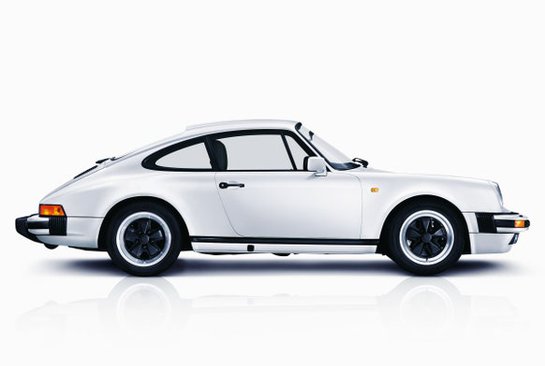
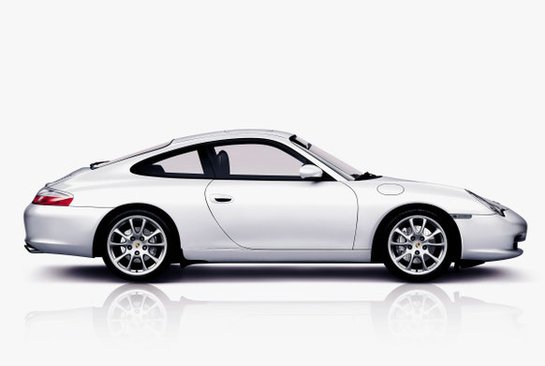
Porsche always understood the value of an icon. Having created one, he wasn’t going to let it slip away. The 911 represents everything that Porsche stands for, a road car that is good enough to take to a track. Of the 30,000 Porsche racing victories, 20,000 have come in a 911. More than one million 911s have been delivered to drivers. Most of them, Porsche are proud to say, are still on the road.
It is an elite car. And within the elite there is another elite – the Carerras. What makes them special? There is a clue in the name, it commemorates the success in the Carrera Panamericana race. This was a road race across Mexico that was famous for being the most dangerous and demanding in the world. Mountain roads at night, deserts in the heat of the day. Drivers died and cars disappeared into ravines, it really was the ultimate test of man and machine.
Porsche were always quick to transfer technology from the track to the road. Innovations like anti-lock disc brakes, rollbars and higher torque engines appeared in production models while other manufacturers were still struggling to master them on the track. The badge became a signal that this vehicle was as at home on the track as it was on the street: the closest you could get to a race car with a road licence.
It is an elite car. And within the elite there is another elite – the Carerras. What makes them special? There is a clue in the name, it commemorates the success in the Carrera Panamericana race. This was a road race across Mexico that was famous for being the most dangerous and demanding in the world. Mountain roads at night, deserts in the heat of the day. Drivers died and cars disappeared into ravines, it really was the ultimate test of man and machine.
Porsche were always quick to transfer technology from the track to the road. Innovations like anti-lock disc brakes, rollbars and higher torque engines appeared in production models while other manufacturers were still struggling to master them on the track. The badge became a signal that this vehicle was as at home on the track as it was on the street: the closest you could get to a race car with a road licence.
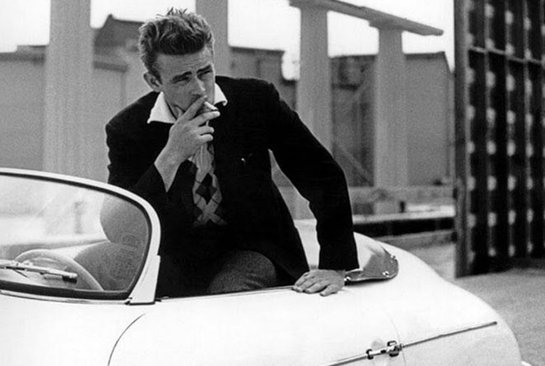
James Dean and his Porsche Speedster
This was classic Porsche. Right from the start, Ferry Porsche was a great, instinctive, marketeer. His first generation of drivers were all German aristocrats. This was entirely deliberate and intentional. He knew that they would bring the right people with them and he knew that the press would be fascinated by drivers with titles. Seventy years before social media was invented, Ferry Porsche was using influencers.
And years later, when the most glamorous driver the world, James Dean, died in a Porsche, Ferry Porsche said nothing, but he must have known it was a gift to the brand. In danger of being the smug bourgeois boy’s car, it was suddenly reflected in the mysterious allure of the beautiful but doomed outsider, who dared to live fast and die young. The brand has never lost that glow.
Innovation and tradition. Glamour, luxury and speed. Porsche have come a long way since the dark post-war days when the company was shattered, the revered founder was in prison and the name was associated with one of the most despised regimes in history. If ever a brand was re-invented it is the small, but beautifully formed, sports car from Stuttgart that was patiently reconstructed by a courteous and respectful son, like a skilled watchmaker reassembling a delicate masterpiece.
They may look like a luxury to outsiders, but to the people who make them and the people who drive them, they express everything that makes life worthwhile.
Paul Cardwell, The Laughing Saboteur
And years later, when the most glamorous driver the world, James Dean, died in a Porsche, Ferry Porsche said nothing, but he must have known it was a gift to the brand. In danger of being the smug bourgeois boy’s car, it was suddenly reflected in the mysterious allure of the beautiful but doomed outsider, who dared to live fast and die young. The brand has never lost that glow.
Innovation and tradition. Glamour, luxury and speed. Porsche have come a long way since the dark post-war days when the company was shattered, the revered founder was in prison and the name was associated with one of the most despised regimes in history. If ever a brand was re-invented it is the small, but beautifully formed, sports car from Stuttgart that was patiently reconstructed by a courteous and respectful son, like a skilled watchmaker reassembling a delicate masterpiece.
They may look like a luxury to outsiders, but to the people who make them and the people who drive them, they express everything that makes life worthwhile.
Paul Cardwell, The Laughing Saboteur
Featured stories
See all of our stories
